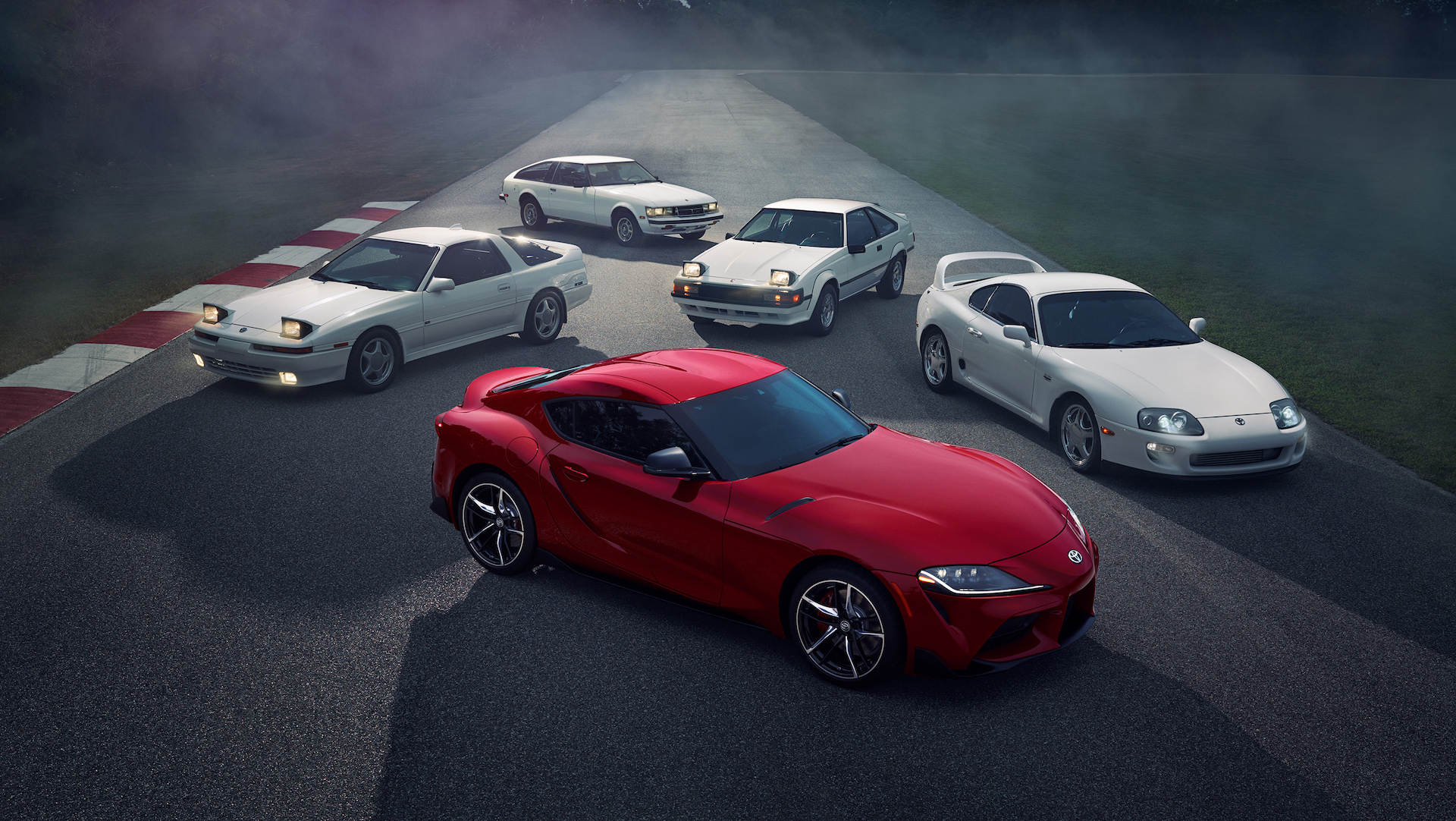

Year, Make, Model: 2020 Toyota Supra
Top Line: The iconic Japanese sports car is brought back from the grave in 2020, and it’s looking sportier, hotter, and more agile than ever thanks to a global partnership between Toyota and Gazoo Racing Model. And as it’s already been disclosed, Toyota and BMW worked closely together to develop their respective sports cars: the Supra and Z4.
What’s New: Everything. Sales of the previous-generation Supra ceased in the United States in 1998, 21 years ago, but production continued in Japan until 2002—which means the only trait shared between the new and the old is the name badge.


Under the hood of the all-new two-seat sports car is a 3.0-liter twin-scroll turbocharged straight-six engine, which produces 335 horsepower and 365 pound-feet of torque. Power is sent to the rear wheels courtesy of a “quick-shifting” eight-speed automatic transmission equipped with paddle shifters mounted behind the steering wheel. According to Toyota, the sum of all components results in a zero-to-60 time of just 4.1 seconds, making the 3,397-pound Supra the quickest Toyota-branded vehicle ever.
In the handling front, the Supra sports specific spring and shock absorber tuning for its double-joint spring strut front suspension and multi-link rear suspension. In combination with an adaptive variable suspension system, the Supra instantly adjusts damping force in response to driver input and road conditions, or via the driver-selectable two settings: Normal and Sport.
In terms of styling, the Supra embodies its kinship with previous models of the venerable sports car, but primarily with the fourth-generation model that was built from 1993 to 2002. Of course, the long hood and rising roofline that smoothly sweeps down onto the trunk lid is reminiscent of the 1967 Toyota 2000 GT, but as a whole, the Supra is nearly identical to the Toyota FT-1 Concept shown half a decade ago, making us wonder just why it took so darn long?


At the front, six-lens LED headlights integrate both daytime running lamps and turn signals to create a distinctive lighting signature, while large openings in the lower part of the front fascia allow air to access the engine and brake cooling ducts. Follow the sightlines up to the windshield and you’ll notice the double-bubble roof design, which is another throwback to the 2000 GT, reduces drag by thinning the roof center to reduce the projected frontal area without sacrificing occupant headroom. In the rear, an integrated spoiler helps suppress aero lift and pays homage to the tall rear wing of fourth-generation Supra Turbo, much like the one that just sold for $121,000.
The interior design of the Supra had to match the sporty looks of its exterior design, which is why Toyota drew its inspiration from sports car racing and even tapped several world-class drivers like Fernando Alonso and Kamui Kobayashi to offer ergonomics feedback. Perhaps we shouldn’t have been that surprised to see the Spanish two-time F1 champ at the unveiling in Detroit. However, it when it comes to hardware, the Supra’s cabin screams BMW—but that’s not a bad thing at all.

The focal point of the cabin is the low-sitting, narrow dash that proudly wears just the basics to get the job done. The tachometer and a shift-timing indicator sit right smack in front of the driver, while a full-color head-up display shows vital information for city driving such as navigation, media, etc. Lastly, two different seats will be available, with the racing-inspired sports seats featuring plenty of bolstering to hold the driver in place, while the upper Supra trim will offer heated leather seats with Alcantara inserts and memory function.
Quotable: “The new version of the famous Supra logotype, the ‘S’ was inspired by a racetrack s-bend,” read the Toyota press release.
“Road and track development took place in France, Austria, Italy (including many winding roads through the Alps), Germany (including the Nürburgring track), Sweden (ice and snow road testing), the U.K., Japan, Australia, and the U.S.”


What to Know: The new Supra will be assembled at Magna Steyr in Graz, Austria.
Once it hits showroom floors this summer, the Supra will be offered in two different trims: 3.0 and 3.0 Premium, although a range-topping Launch Edition will also be available in limited numbers.
Eight different colors will be available at launch, including one with a matte finish: Phantom Matte Gray, Renaissance Red 2.0, Nitro Yellow, Downshift Blue, Absolute Zero White, Tungsten Silver, Turbulence Gray, and Nocturnal Black.
Toyota has yet to confirm pricing, but an enthusiast site with oftentimes reliable sources claims it will start around $50,000 with the Premium trim commanding an additional $5,000 or so. That being said, big spenders can go all-out and bid for the very first 2020 Toyota Supra at the upcoming Barrett-Jackson Auction in Scottsdale, Arizona on Jan. 19.